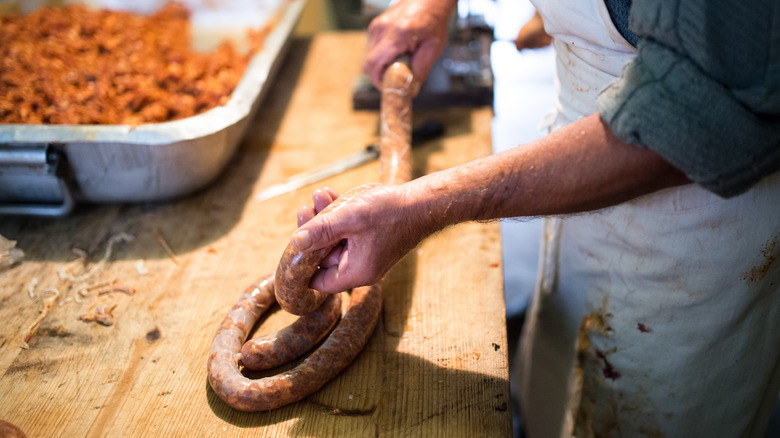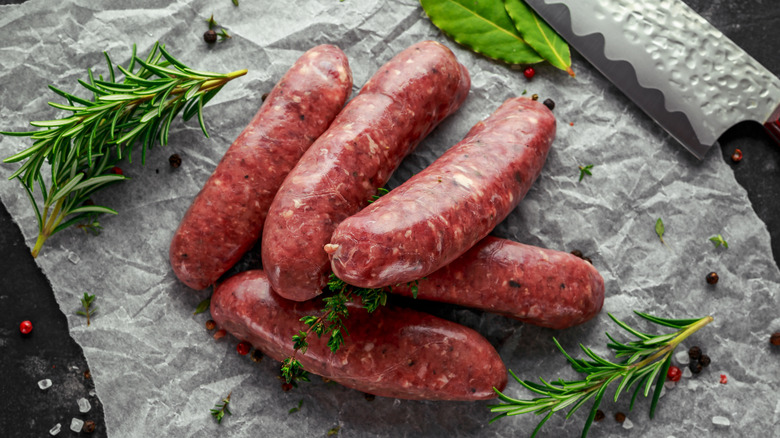The Crucial Role Salt Plays In A Sausage's Texture
Salt might be the most important ingredient of all time. Long before canning and refrigeration became the primary methods of food preservation, salt was absolutely vital. It was utilized across various food groups, but none with more drastically important cultural results than meat. All the cured meats we know and love like prosciutto, capicola, guanciale, salami, deli meats, and even hot dogs would not exist without salt. This foundational ingredient serves to provide flavor, as well as retain and remove moisture.
When it comes to sausages, however, salt plays an even more important role. The construction and overall texture of the finished product rely heavily upon the amount of salt added to the meat mixture. Sausage is a combination of various meat trimmings, including muscles, organs, and fat, all of which contain different amounts of water. As meats with high water-binding properties are typically preferred when it comes to sausages, the fattier off-cuts tend to be preferred over the leaner ones.
Salt comes into play as an additional binding agent, in that it helps aid the water-binding properties already present in the ground meat. As the amount of salt added directly impacts the final amount of water present in the finished product, it also has a great effect on the texture of the sausage filling.
Salty science
Sausages are split into several different classifications, but all begin with the same basic principle — stuffing seasoned, ground meat into natural casings. For cured sausages, like Genoa salami, the salt content in both the inner mixture and outer casing is going to be extremely high. Our focus, however, is going to be on the more commonly sold raw pork sausage.
In these types of sausages, like bratwurst or hot/sweet Italian, the salt creates a consistent smooth texture throughout the link. Salting draws water out of the ground meat. That water in turn dissolves the salt and the resulting brine is reintroduced to the meat. Throughout this process, the meat proteins have broken down to a point where they can easily be blended together with simple kneading. Several hours need to pass before the meat is reduced to this point, however.
It is also important to note the significant safety role salt plays. As the National Library of Medicine shows, any reduction in the amount of salt in raw pork sausages increases the meat's susceptibility to harmful bacteria. The presence of salt greatly reduces the chance of contamination. While it is ironic that salt simultaneously draws out and reintroduces moisture into the meat, it is a well-established irony. Sausages have endured for generations as a venerated culinary tradition, making carnivores across the world smile in salty pleasure.

